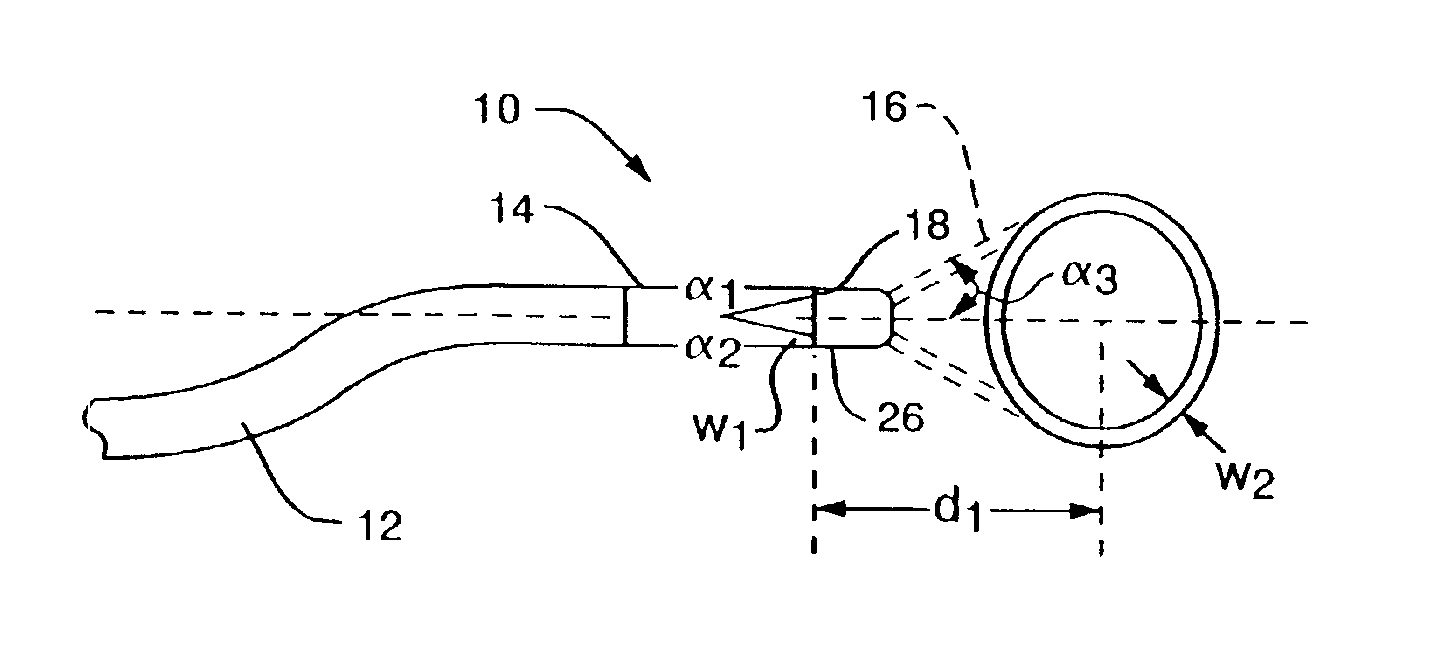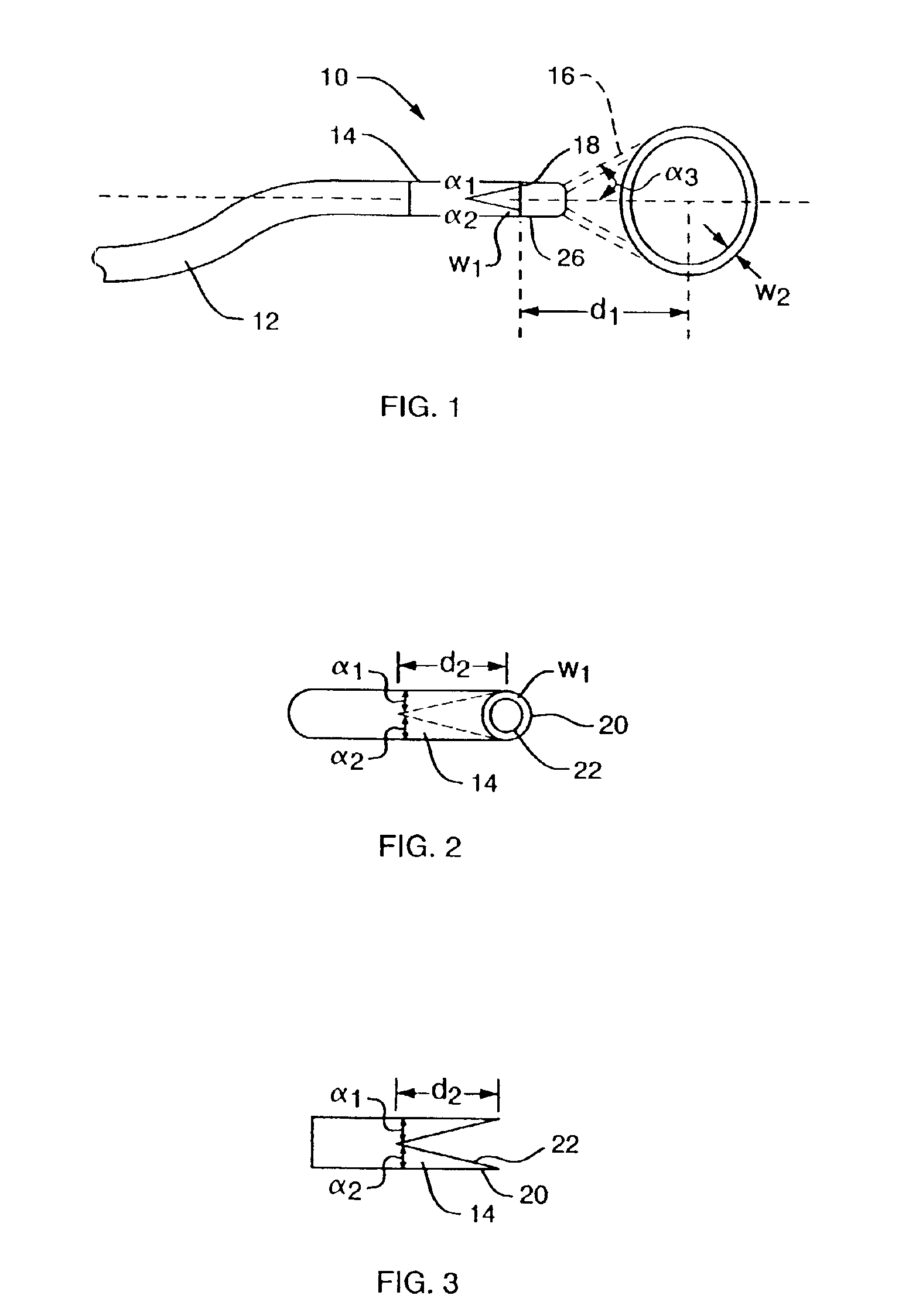Phototherapeutic wave guide apparatus
a waveguide and waveguide technology, applied in the field of phototherapy, can solve the problems of reducing the effectiveness of several of these light energy sources, requiring great precision in irradiation of tissue, blood and/or other body fluids, etc., and achieving the effect of eliminating aberrant wave conduction and minimizing damage to surrounding tissues
- Summary
- Abstract
- Description
- Claims
- Application Information
AI Technical Summary
Benefits of technology
Problems solved by technology
Method used
Image
Examples
Embodiment Construction
[0039]The features and other details of the invention will now be more particularly described and pointed out in the claims. It will be understood that the particular embodiments of the invention are shown by way of illustration and not as limitations of the invention. The principle features of this invention can be employed in various embodiments without departing from the scope of the invention.
[0040]The present invention is based, at least in part, on a discovery that the present invention can be used for inducing hyperthermia, coagulation or phototherapeutic processes in tissue, e.g., ablation, degradation, or destruction of tissue, at a specified site in tissue without harming the surrounding tissue. The results are surprising and unexpected since the efficiency and efficacy coherent light is generally diminished by light scatter, formation of “hot spots” due to inefficient light scatter, by the limitation that the light emitted from an optical fiber continues in a straight pat...
PUM
 Login to View More
Login to View More Abstract
Description
Claims
Application Information
 Login to View More
Login to View More - R&D
- Intellectual Property
- Life Sciences
- Materials
- Tech Scout
- Unparalleled Data Quality
- Higher Quality Content
- 60% Fewer Hallucinations
Browse by: Latest US Patents, China's latest patents, Technical Efficacy Thesaurus, Application Domain, Technology Topic, Popular Technical Reports.
© 2025 PatSnap. All rights reserved.Legal|Privacy policy|Modern Slavery Act Transparency Statement|Sitemap|About US| Contact US: help@patsnap.com



